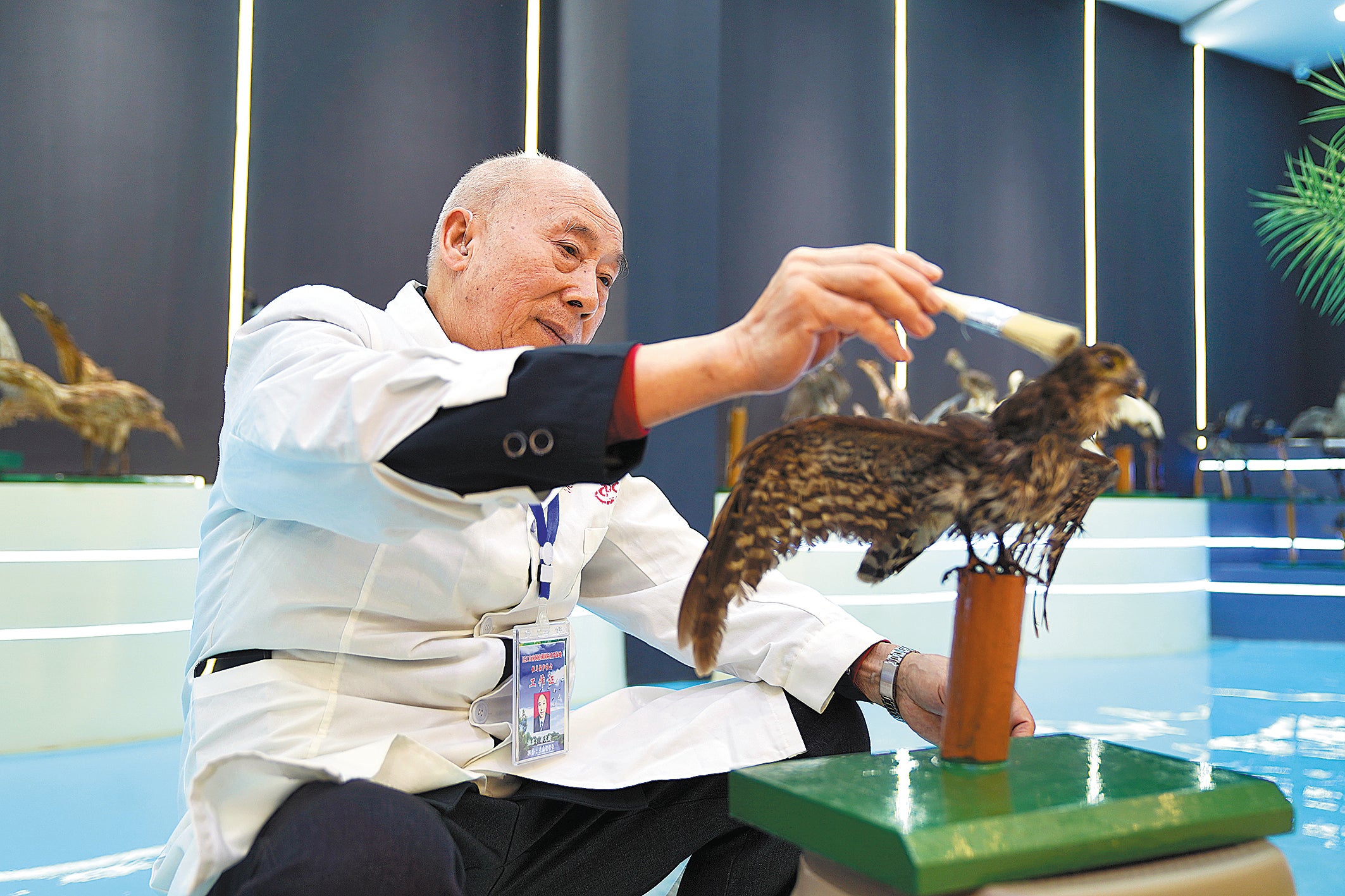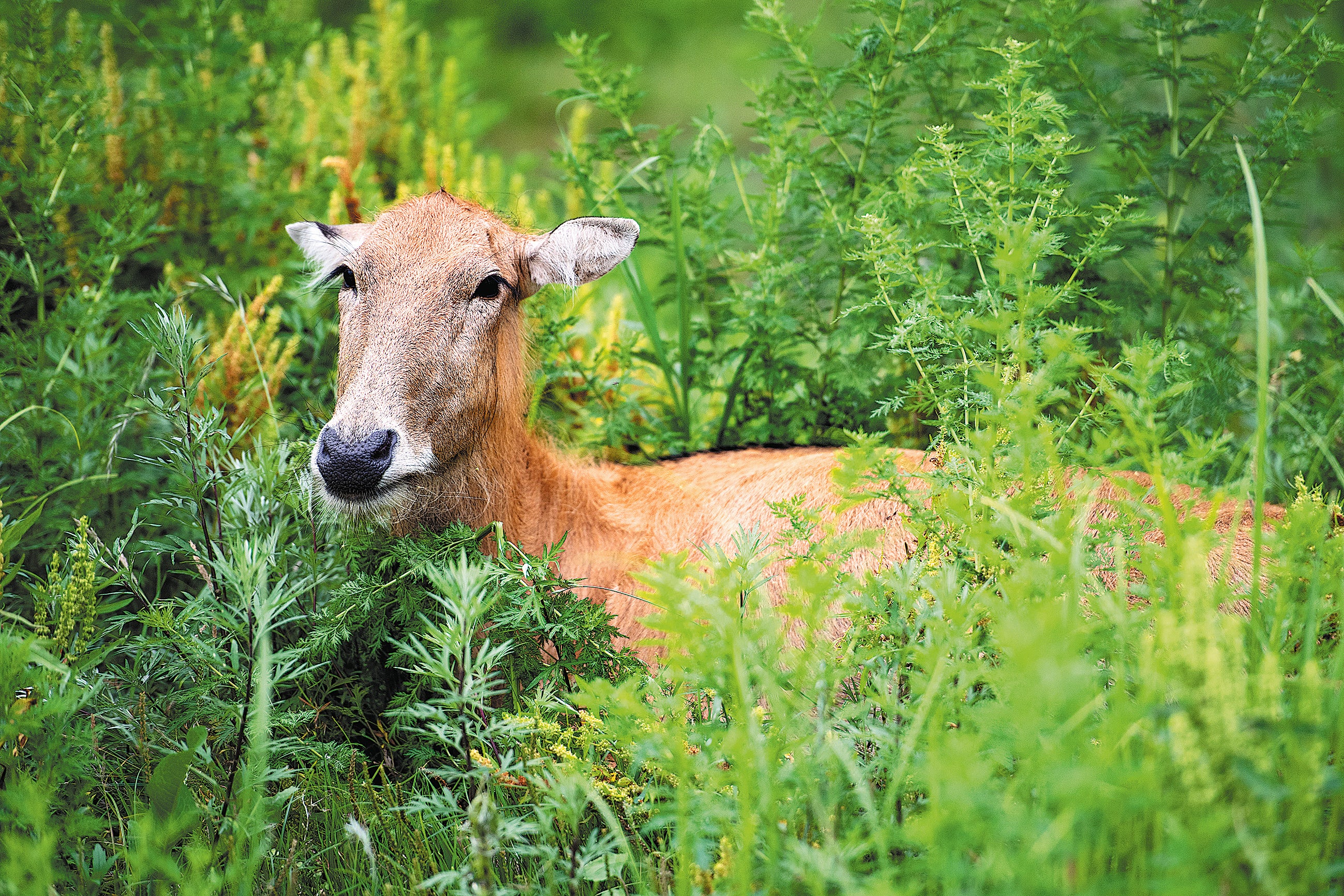All creatures great and small
THE ARTICLES ON THESE PAGES ARE PRODUCED BY CHINA DAILY, WHICH TAKES SOLE RESPONSIBILITY FOR THE CONTENTS

The hundreds of taxidermy displays at the Dongting Lake biodiversity gallery in Sanyantang village, Hunan province, give a glimpse into how prosperous and diverse the natural environment of the area around China’s second-largest freshwater lake once was.
Behind these specimens is 73-year-old taxidermist Li Wenjian, a retired doctor of the Yuanjiang epidemic prevention station in Yuanjiang city, Hunan.
Since 1983, Li has stuffed and preserved more than 1,400 animals, insects and plants from the lake’s environs in order to enable people to understand the local flora and fauna better.
“Dongting Lake nurtures bountiful life, and through taxidermy, some deceased and endangered animals have been brought back to ‘life’,” Li says, adding that he hopes his creations will help raise people’s awareness of the needs to protect the biodiversity of what he calls the “mother lake”.
In his eyes, these specimens show respect for the life of the creatures and, what’s more, they enable people to reflect on the relationship between people and nature.
Due to the intensification of agricultural practices and re-engineering of the waterways since the 1950s, the lake had been reduced to half its size – from about 2,317 square miles recorded in 1852 to fewer than 1,042 sq miles in 2003. As one of the wetlands that make up the floodplains of the Yangtze River, Dongting Lake is an important habitat for migratory waterfowl and other wildlife.
“The lake of my childhood memories has gradually disappeared, which has often worried me,” Li says, adding that, in the 1960s, fishermen would frequently encounter finless porpoises and various other wild animals, such as barking deer and weasels.
A pair of wild Chinese milu deer are among the most challenging specimens that Li has worked on. In July 2016, the pair were drowned in rising floodwaters at the lake. After salvaging the deer and carrying out a postmortem, the Yuanjiang Forestry Bureau contacted Li to preserve them.

With the deer weighing more than 881lb in total, it took Li one and a half months to get them to “stand on their feet” again. He had to conquer the scorching heat of summer and pungent odour of the disinfectant, because if the corpse decayed, the taxidermy would fail.
According to Li, this is a complex process. After measuring the body, the deer is skinned with its meat, skull, bones and internal organs removed. While the skin dries out, a steel-framed mannequin is prepared and after anti-corrosion treatment, it has the deer mounted on it, with its skin repositioned around the mannequin, its feet arranged and glass eyes inserted for the final touch.
“You can’t rush any step. One mistake can ruin the whole thing,” Li says.
“For some people, the practice of taxidermy may seem strange, or even terrifying, but preserving nature through individual lives is still valuable in scientific research and showcases the great diversity of nature to the public,” he adds.
Cooperating with Yuanjiang Science and Technology Association, Li has held exhibitions of his specimens on the street and on campus to raise public awareness of biodiversity and environmental protection.
Last year, the Dongting Lake biodiversity gallery, covering more than 5,300 square feet, was built to display Li’s creations.
He is also glad to see that dramatic changes have occurred in and around Dongting Lake. In 2020, a 10-year fishing moratorium was established on the lake.
The population of indicative and endangered species has increased, or has been stabilised, such as winter migratory birds, Chinese milu deer and Yangtze finless porpoises, according to the local environmental department.
In February last year, a record-high 404,000 waterfowl, representing 74 species, were spotted at Dongting Lake.
Walking around the lake, Li has seen Chinese mergansers, milu deer and white eels, which he says he finds thrilling, as if meeting old friends.
